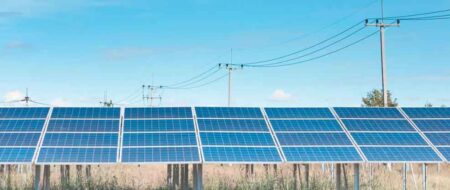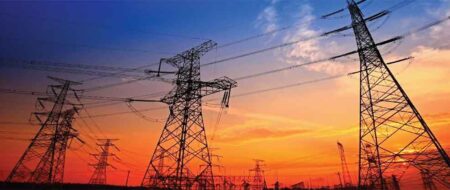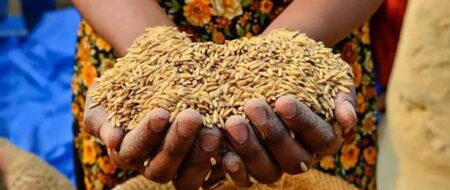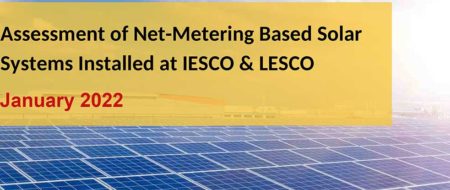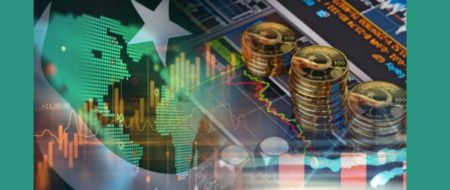Pakistan’s Economic Challenges and the Budget 2008-09
Budget 2008-09 does not respond to the extraordinary challenges facing the national economy.
The national budget is one of the most important documents of a country. It is not merely a statement of income and expenditure; it is a mirror of the financial and economic state of an economy and an authentic statement about the economic, financial and fiscal policies of the government.
Pakistan’s budget for fiscal year 2008–09 was presented and approved in a peculiar environment—one in which the country is faced with numerous challenges. The first of these is the delicate security situation and pressures from the western borders. Then, political uncertainty continues to prevail, with hardly any solution in sight for the quagmire the country is caught in. As to economic problems, IPS has been pointing out time and again that the “economic achievements” of the previous regime would be short-lived, as there was no tangible improvement in the fundamentals of the economy. This is quite evident from the current economic turmoil.
The budgetary measures of a government reflect its vision for the national economy. This article assesses the extent to which the national budget for 2008–09 responds to the key economic challenges facing Pakistan today.
Current Economic Challenges
Immediate Issues
The Pakistan economy is faced with some very obvious challenges that are of an immediate nature and need to be taken care of at the earliest. These include the following:
Inflation: The most pressing issue facing Pakistan on the economic front is the high rate of inflation. According to Economic Survey 2007–08, the Consumer Price Index (CPI)-based inflation averaged 10.3 percent during between July 2007 and April 2008, as against 7.9 percent in the corresponding period the previous year. Inflation in the food group is even higher in this period—15 percent according to official figures. Inflation in the month of May 2008 alone was 17 percent. For the lowest income group, with earnings of 3,000 to 3,500 rupees per household, inflation is alarmingly higher, i.e. 30 percent.
This high level of inflation is being witnessed despite the fact that the increased cost of oil and electricity has not yet been fully passed on to consumers. The subsidy for the Water and Power Development Authority (WAPDA) has now reached unsustainable levels — as high as Rs. 17 per unit. Pakistan is under pressure from international financial institutions (IFIs) to do away with subsidies and the government has announced that all subsidies will be curtailed by end-December 2008.
Notably, inflation in Pakistan is not just an extension of the global trends, particularly escalation in oil and commodity prices, as is being said, but is very much a result of the government’s profligacy and wastefulness, as explained later in this article.
Imprudent government expenditure: Government spending has been increasing at 23 percent per annum during the last six years while net tax revenues of the federal government grew at only 13 percent in the same period. This gap is being widened even further with a very loose monetary policy. According to official statistics, the government borrowed Rs. 550 billion from the State Bank of Pakistan (SBP). However, some people believe the actual amount was higher than the government claims, i.e. Rs. 930 billion, and the Governor SBP is said to have requested the government to amend the Fiscal Responsibility and Debt Limitation Act 2005.
Current account and trade deficit: It is obvious that when an economy grows at a very fast pace and the production base does not expand, imports increase. Government policies have contributed to an unsustainable current account deficit (CAD) of US$13 billion, which was financed mainly from liberal bilateral and cheap multilateral aid and privatization proceeds. The trade deficit of the country ballooned to $20.7 billion in fiscal year 2007–08 — an increase of 52.95 percent over its level of $13.563 billion in 2006–07.[1]
Pressure on rupee and flight of capital. The Pakistani rupee has been under pressure in the wake of the increased demand for dollars: the rupee has depreciated against the dollar by 18.9 percent from January 1 to July 9, 2008.[2] SBP undertook two different sets of stringent measures to check the rupee’s free fall but the efforts seem to be bearing little results.
The flight of capital from Pakistan is also worrisome. It may partly be attributed to the defeated posture adopted by some people in the government, who have been making statements implying that an economic meltdown is under way.
Medium-term Issues
The key medium-term economic challenges facing Pakistan are outlined below.
Sustainability of growth: According to Economic Survey 2007–08, overall investments in the country have come down to 21.9 percent of GDP from their record level of 22.9 percent of GDP in 2006–07. The foremost question in the medium term, therefore, is: Can a growth rate of even 6 percent be maintained from an investment level of 21 percent of GDP, or do we have to learn to live with lower growth rates? Of course, a country at the development stage of Pakistan cannot choose the option of low growth.
Savings-investment gap: Savings in the country are low. Currently, national savings stand at 13.9 percent of GDP, having fallen steeply from 17.8 percent last year, and there is a huge gap between savings and investment. In comparison, Pakistan’s neighbors India and China have savings rates of 34 and 42 percent of GDP, respectively. With investment already too low to keep up the pace of growth, it is important to ask how this gap can be filled and for how long this situation can be sustained. Such a huge gap between savings and investment means Pakistan has to take more capital from abroad at high interest rates. This has been happening in the past but, of course, cannot go on for very long.
Need for public expenditure review and greater transparency: No doubt, there has been considerable improvement in the collection of revenues. Federal revenues have increased from Rs. 386 billion in 1999–2000 to Rs. 1000 billion today, as projected by the Central Board of Revenue (CBR).
However, the defense expenditure alone has increased in the same period from Rs. 150 billion to Rs. 335 billion. While there is little doubt that the national security situation demands a strong defense capability, the current situation does not reflect an ideal balance: defense expenditure is US$34 per capita against US$2 for education and health combined. The civilian administration’s expenditure has also ballooned from Rs. 48 billion in 1999-2000 to approximately Rs. 150 billion today.
There have been no signs of austerity, even at the highest level. Six aircraft were added to the VIP fleet of the President, the Prime Minister and four Chief Ministers in the last two fiscal years. High spending continues on bullet-proof and luxury, high fuel consuming cars, foreign trips of VIPs,[3] non-productive activities and institutions, etc.
Even spending in the Public Sector Development Program (PSDP) is not going to the priority sectors. Additional homes for federal ministers are being built despite the claims that the concurrent list is being abolished. While the low government expenditure on social sectors such as education is important, even more critical is the issue of the efficiency with which spending is taking place. What is being provided to the public from rising revenues? It is very important to review the level, composition and efficiency of public expenditures.
Medium- to Long-term Issues
As discussed above, the efficiency and quality of government expenditure is very poor and needs to be improved. It is estimated that with the judicious use of resources even from the present budgetary allocation for education, twice the number of students can be provided better quality education.
Complex and exploitative taxation regime: While there has been a lot of talk about rising revenues, the country’s tax-to-GDP ratio, at 11 percent, is the lowest in the region. Collection is poor and the taxation base is very narrow. Then, there are structural and systemic issues, such as exemptions and definitions. For example, a major sector like agriculture is exempt. Certain groups are not ready to pay whatever little tax is applied on them. A very important issue of recent years concerns a few select stock brokers, who have made huge earnings through shares’ trading which, since they are considered “capital gain,” not “income,” have been income tax free.[4] The same is the case with those earning enormous amounts in real estate trade. On the other hand, those investing in productive activities have to pay taxes. This situation is discouraging investment in productive sectors of the economy, while providing an incentive for investment in stocks and property.
One indication of the fact that rich people are taxed lightly in Pakistan is that total personal income tax is just 1 percent of GDP. There are 21 ‘slabs’ of income tax; too many rates characterize the customs duty; and a (SROs) regime is in operation, which makes the system very complex. This very characteristic—the complexity of the taxation structure—promotes tax evasion and avoidance.
Poverty and inequalities: The country continues to be faced with grinding poverty. While official figures indicate some improvement, it is very obvious that the situation on the ground has deteriorated, particularly from two years of high inflation.
There are huge disconnects between the rich and the poor, and ever-widening disparities. Income inequality is not an issue specific to Pakistan, and some other countries are perhaps even more unequal. However, the nature of development in the country in the last six years has been such that differences have widened: high growth took place in skill-intensive sectors, and since a major chunk of the population is not only unskilled but also illiterate, it is being left far behind. This is also one of the major reasons behind growing regional disparities, for instance, between Punjab and rural Sindh, the North West Frontier Province (NWFP) and Balochistan.
Perhaps the simplest way to express the inequality in Pakistan is this: for every 100 rupees that are generated in the economy, 34 go to the richest 10 percent of the population and only 3 rupees actually filter to the poorest 10 percent.
Pressure from IFIs: A critical issue for the Pakistan economy is the involvement of and pressure from IFIs. The recent record shows that, as long as Pakistan was on good terms with the United States, IFIs’ reports about its economy were very positive and upbeat. The World Bank and International Monetary Fund (IMF) were praising Pakistan’s “economic performance” until very recently.[5] In the changed scenario, however, they are saying that the Pakistan economy is facing ‘macroeconomic imbalances’ and are raising doubts about the economic picture.[6] For instance, while subsidies are hard to defend in the first place, the country is under immense pressure from World Bank to end them at the earliest.[7]
Then, there are certain other longstanding issues. Exports have long suffered due to anti-export biases such as an overvalued exchange rate. There are differences in inflation rates between Pakistan and its trading partners as well as its competitors. There has been heavy reliance on inflows in the capital account to meet deficits on the current account and to maintain the exchange rate. Now the important questions are how to meet the import bill and how to service debt.
High foreign investment was boasted by the previous government. But the situation today has reached the point where foreign investment outflows have overtaken the servicing of debt. Continuing neglect of skill development is another issue hurting industry, particularly exports.
Governance Problems
Some of the weaknesses in the economic strategy have been outlined above. Governance issues compound these. No economic policy can achieve its results without good governance. For instance, security and a satisfactory law and order situation are prerequisites for increasing economic activities in the country. Similarly, uprooting corruption at all levels is of utmost importance. The importance of a viable infrastructure and unhindered energy supplies need not be emphasized.
Pakistan’s situation regarding these points is clearly troublesome. A recently published report, Governance Matters VII, rates Pakistan negatively on major governance indicators, showing that the claims of the previous regime regarding good governance were pure rhetoric.[8]
Responsiveness of the National Budget 2008–09
This section considers whether the National Budget for 2008–09 is responsive to the current economic challenges. It first looks at some of the positive features of the budget and then presents an overall assessment.
Positive Features
The positive features of the budget include the following:
- The freezing of non-salary expenditure, ban on purchase of new assets for offices, and slashing of the budget for the Prime Minister’s Secretariat, though symbolic in nature, are welcome and important steps for conveying the message that austerity is the need of the hour.
- The increase in adjustable withholding taxes for large consumers of electricity and landline telephones may create some problems of liquidity for industries but, by and large, is a positive step.
- There is some emphasis on agriculture for public investment, which seems to be the best pro-poor intervention in the budget. If the farmers receive more money, the demand for goods and services in the rural areas will increase, and it will be the kind of demand that generates employment for low-skilled people. This is better than putting money in the pockets of the rich people. (However, a related measure, enhancement of subsidies, is not a very good idea as the major beneficiaries will be the large farmers only; both outputs and inputs should be at market prices.)
- The increases in salaries and pensions of government employees, and in the minimum wage (to Rs. 6,000), while still not sufficient for actual needs, are welcome measures.
- The presentation of some details of the defense budget in the parliament is the beginning of a good practice, though as yet only an initial step.
Overall Assessment
As a whole, the measures announced in this year’s budget do not indicate any profound foresight or serious effort to address the economic challenges facing the country. It is true that the Pakistan People’s Party (PPP)-led coalition government has inherited a difficult situation. However, the claims that the gravity of economic pressures are fully appreciated in government circles are not entirely borne out by the provisions of the budget for 2008–09, which still only appears to take a casual view of the challenges ahead.
Optimistic targets: Firstly, the targets set for the budget deficit (4.7 percent of GDP) and inflation (12 percent) are too optimistic. It will not be possible to achieve these unless more is done to cut wasteful government expenditure, spending on defence is rationalized, and cuts are made on the expenses of the oversized civil administration.
The government’s projections of growth are also very optimistic, given that it is not clear what instruments the government will use to influence achieve this growth. In particular, the country’s agriculture sector is highly susceptible to weather and pests. Likewise, few options and instruments are available to influence industry, exports and overall growth with the current energy shortages, oil and electricity price increases, interest rate hike (which is expected to go up further still) and 35-percent LC cash margin. In fact, in the present circumstances of electricity shortages, it can be expected that a number of small industries will be forced to close down and the market share will shift from small to big businessmen.
The targeted growth of 25 percent in tax revenues also seems very hard to achieve. The old practice of fiddling with the rates has been adopted and there is little evidence of any effort to widen the tax base or to tax the big fish. Instead of withdrawing the exemptions that eat up significant potential revenues, the usual option of enhancing general sales tax (GST) and excise duty on existing sectors (mainly cement, telecommunications and financial services) has been preferred. This beaten path will yield only marginal relief; real results will only accrue from broadening the base and checking evasion/avoidance.
The budget also envisages that remittances will increase, but offers no well thought out plans to put these remittances to productive use as opposed to the usual speculative investment and conspicuous consumption. There are indications that, while they do help the balance of payments (BoP), remittances have been a source of inequalities and increased poverty.[9]
PSDP: The amount allocated for the Public Sector Development Programme, Rs. 549.7 billion, is very large, but how it will be financed remains a question. It seems the federal government is attempting to do too much by itself, including projects that can and should be taken care of by the local governments. For example, the upgrading of basic health units (BHUs) and roads in far-flung areas, though extremely necessary, can be delegated to the local or at least provincial governments. It also seems from the allocation of PDSP that little focus has been given to the real infrastructural needs of the country.
CAD and BoP issues: Nothing specific and forceful has been done to address the burgeoning current account deficit, which has reached a mammoth $13 billion. It may be important to note here that even friendly countries like Saudi Arabia have yet to announce any specific and concrete support to address balance of payments issues, as requested by the new government.
Duty on imports of 300 “luxury items” has been increased by 30–35 percent and on all other imports by 1 percent. There is no denying the fact that imports, particularly the import of luxury items, should be curtailed to narrow the trade deficit. However, measures are needed to ensure that such moves do not encourage under-invoicing and smuggling. It is also not clear for how long the increase in duty will be manageable under the World Trade Organization (WTO) regime. Moreover, the announced increase on luxury items is not high enough to discourage their import. For instance, duty on the import of cars of more than 1,800 cc has been increased only by 10 percent, i.e. from 90 to 100 percent.
Amnesty scheme: Another amnesty or whitener scheme has been announced. Every one can now ‘whiten’ his black money by paying tax at the rate of just 2 percent of the total. This is the fourth such scheme announced in Pakistan. It is well known from the experience of previous schemes that such initiatives do not work; the only solution is to penalize those keeping their money and businesses undocumented.
Industrial sector: Some incentives for industry have been announced, but these are mainly targeted at already well-protected industries. For instance, protection has increased for motor car assemblers, although the industry is already surviving on protection and there is no evidence that it is getting competitive. Indeed, this industry seems to be developing into a case similar to the textiles industry, which has been given numerous incentives in the past and, yet, demands more. Such industries rarely opt to enhance their competitive edge and generally continue to rely on protective measures.
In addition, it is not clear how industrial competitiveness will be impacted as oil and electricity subsidies are phased out. The budget does not equitably share the burden of adjustment through taxes, government expenditure and policies. The budget also fails to support liberalization of trade and to create export opportunities.
Relief and social measures: The budget contains some announcements to support the needy and deserving, such as the “Benazir Card[10].” While welcome for now, these measures should be short-term and, in future, should be confined to the old, the indigent and the disabled. Besides, such schemes are bound to be misused if not delivered in a transparent and open manner. A major chunk of the eligible people will not be able to benefit as most of the people in the Federally Administered Tribal Area (FATA), Balochistan and rural Sindh do not have national identity cards (NICs). The expectation of providing immediate relief may not be met as setting up the announced system for distribution of support could take up to six months.
While the subsidies are being continued, which is not a very positive idea in the first place, the greatest challenge for the government will be to manage public expectations, especially with respect to wheat/atta and subsidies on food.
Although there is an announced resolve to provide housing to people, the burden of taxation on construction and the housing sector has been increased. Not only is this sector vital to provide more housing, it is also labor-intensive, an important source of employment for the less skilled, and closely linked with more than 30 other industries.
Need for a Paradigm Shift
While it is true that the government had little time — less than three months in office — before presenting the current budget, it nevertheless has to be acknowledged that the same old paradigm and approach have been used in its formulation and therefore the expectations of the people remain far from being met. Given the extraordinary challenges Pakistan economy is facing today, what is needed is a paradigm shift. Unless there is clarity of vision, the right strategies will be hard to devise and proper steps can hardly be expected.
The entire process of budget formulation, presentation and approval is a serious issue but continues to be taken causally. Once again, the current budget was presented very late — only 19 days before the start of the new fiscal year — and was approved hastily. However, the government’s announcement that, from the next year onwards, the process will start as early as in March, is a positive development.
Growing regional disparities are a cause of concern. Punjab has been growing at a rate of 10 percent per year during the last six years. Considering the overall growth statistics, this means that other regions are growing at a relatively low pace. To address these disparities, the constitution should be amended to give the provinces more control over their natural resources.
Fiscal and administrative decentralization is the need of the hour. The National Finance Commission (NFC) should be revised to reduce the share of the federal government and give provinces more resources. Currently, the sole basis of the NFC award is population. While this is an important factor, other factors such as area, backwardness and cost of service delivery should also be formally considered criteria for the NFC award.
An important feature of the budget is that it increases the number of judges of the Supreme Court to 29 through the “Finance Bill.” This is the first time that a political move has been introduced through the Finance Bill. It is pertinent to note here that the upper house of the parliament, the Senate, can only make recommendations regarding the Finance Bill and has no role in its approval. Therefore, this decision has undermined the Senate’s right of legislation.
Electricity and gas are important for very household; for the poor, these two utilities cost a good part of the monthly income. To provide immediate relief to the people, the lifeline units for electricity and gas consumers could be increased for some period, say, the next two years. The shortfall caused by this in revenues could be financed from reduced subsidies for oil and larger consumers of electricity. This is essential for social harmony.
The increase in oil prices in the international market can be passed on to the consumers for shorter period. However, the effects can be minimized by reducing GST on oil to a low level, say 5 percent. To counter possible revenue shortfalls, a specific subsidy could be announced. GST on petroleum products could be raised back to 15 percent when the situation improves.
The Pakistan economy has a large base, much of which remains to be tapped and therefore holds potential for significant development. The country is blessed with water resources that, through better utilization, could help in rapid progress. Much investment has been made in the roads and telecommunication infrastructure in recent years, and this is a new advantage that should be utilized for better economic performance
For the first time in decades, terms of trades are shifting in favor of agriculture. If subsidies are removed under the WTO regime, Pakistani farmers can benefit. Agriculture is providing employment to some 55 percent of the rural population, which would gain from enhanced trading opportunities. This would enhance rural incomes, create a demand for goods and services on a sustainable basis, and improve the supply of food grains as well as raw materials for industry.
The Pakistani diaspora has done well in the USA and Europe. The USA is now the leading source of remittances to Pakistan. Remittances from USA and Europe accounted for 42 percent of total remittances in 2005–2006, as against 80 percent from the Middle East in the mid-1980s. The capital, skills and expertise of the diaspora, if properly attracted, could be highly advantageous.
Oil-producing Islamic countries have a lot of liquidity and investable resources as a result of increased revenues from oil exports. They are also facing some constraints in making investments and keeping assets in the Western world. Investments should be attracted from these cash-rich Muslim countries. Besides increased investment, such inflows would also help reduce the fiscal imbalance, particularly CAD.
[1] Mubarak Zeb Khan, “Mounting trade deficit touches $ 20.7 billion,” Dawn, July 10, 2008.
[2] Dawn, “Fall of the rupee,” July 10, 2008.
[3] For example, Prime Minister Yusuf Raza Gilani took an entourage of more than 80 people to Saudi Arabia in early June 2008 (Rauf Klasra, “PM lands in Medina with $6bn wish list,” The News International, June 7, 2008).
[4] One of the investigations regarding the stock market crash of March 2005 was about tax returns on the income of stock brokers. It was revealed that one particular stock broker showed his ‘white’ cash balance at Rs. 60,000 in 1991. His balance increased to Rs. 21 billion in 2004.
[5] Daily Times, “World bank, IMF praise Pakistan for economic progress,” April 24, 2006.
, “Economic picture of Pakistan not good: WB,” March 28, 2008, http://www.financialexpress.com/news/Economic-picture-of-Pakistan-not-good-WB/289545/ (accessed June 30, 2008).
[7] Afzal Bajwa, “Subsidies must go, insists WB,” The Nation, June 24, 2008.
[8] Mansoor Ahmad, “Governance has deteriorated in Pakistan,” The News International, June 25, 2008.
[9] Irfan Shahzad, “Remittances: Boon for few, bane for many,” The Frontier Post, December 29, 2006.
[10] It has been announced that under this scheme, some 7 million families living below the poverty line will be given a support of Rs 1,000 per month. The amount will be provided to family head, after selecting deserving members from the database of NADRA.





